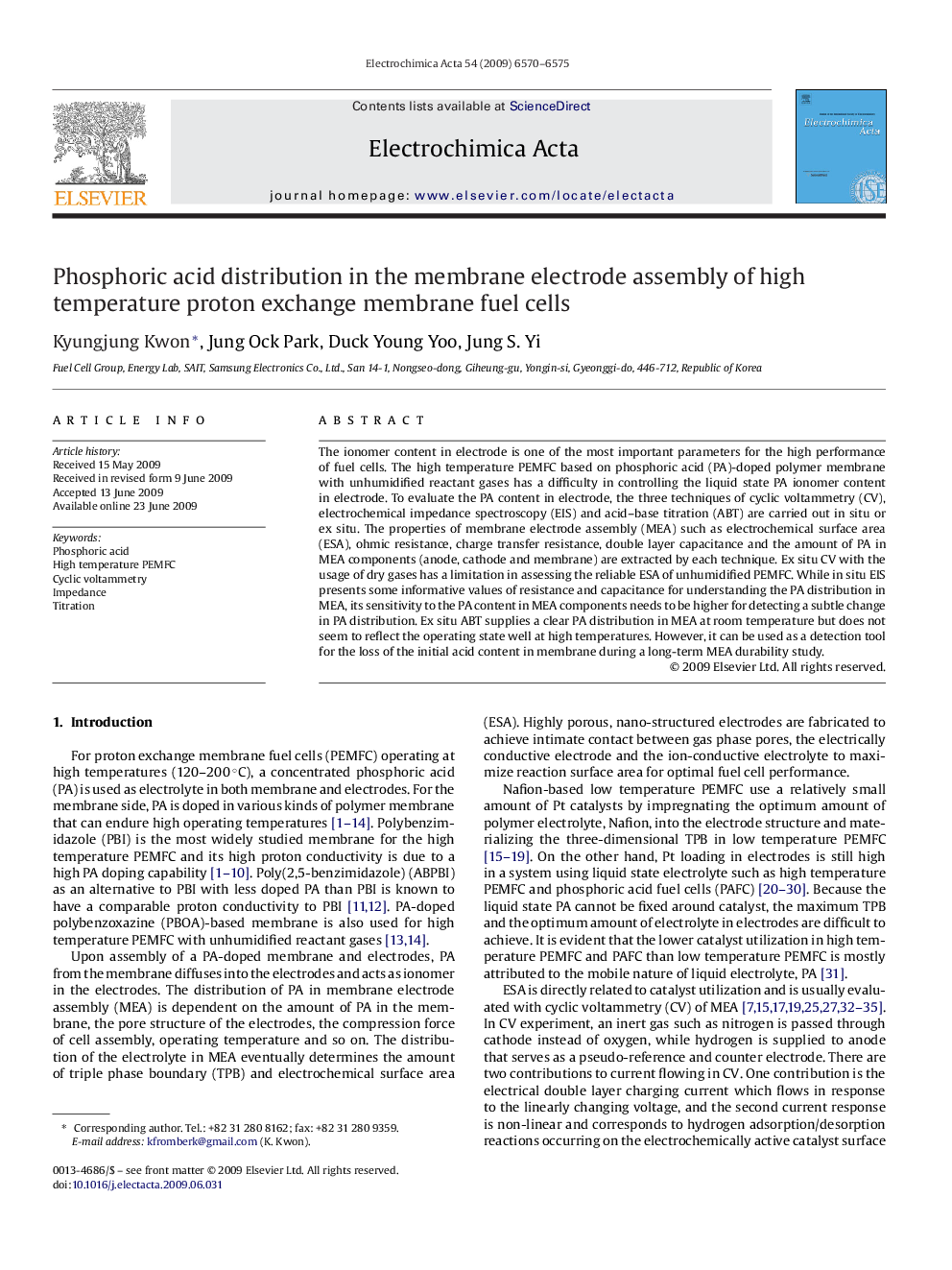| Article ID | Journal | Published Year | Pages | File Type |
|---|---|---|---|---|
| 193239 | Electrochimica Acta | 2009 | 6 Pages |
The ionomer content in electrode is one of the most important parameters for the high performance of fuel cells. The high temperature PEMFC based on phosphoric acid (PA)-doped polymer membrane with unhumidified reactant gases has a difficulty in controlling the liquid state PA ionomer content in electrode. To evaluate the PA content in electrode, the three techniques of cyclic voltammetry (CV), electrochemical impedance spectroscopy (EIS) and acid–base titration (ABT) are carried out in situ or ex situ. The properties of membrane electrode assembly (MEA) such as electrochemical surface area (ESA), ohmic resistance, charge transfer resistance, double layer capacitance and the amount of PA in MEA components (anode, cathode and membrane) are extracted by each technique. Ex situ CV with the usage of dry gases has a limitation in assessing the reliable ESA of unhumidified PEMFC. While in situ EIS presents some informative values of resistance and capacitance for understanding the PA distribution in MEA, its sensitivity to the PA content in MEA components needs to be higher for detecting a subtle change in PA distribution. Ex situ ABT supplies a clear PA distribution in MEA at room temperature but does not seem to reflect the operating state well at high temperatures. However, it can be used as a detection tool for the loss of the initial acid content in membrane during a long-term MEA durability study.
